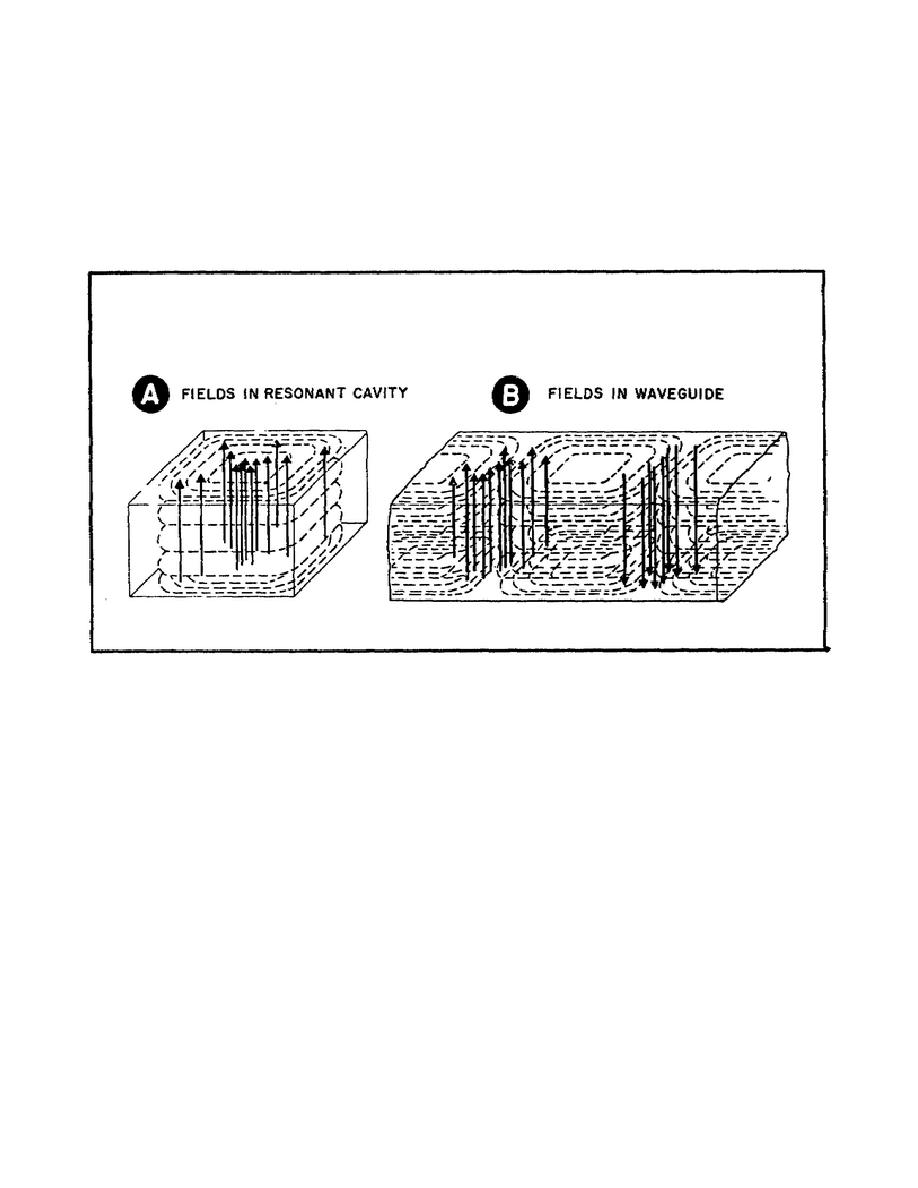
reflected from one wall. The reflected energy returns to the point where it
was applied and is completely reflected again. These reflections continue
for a period of time; so we say the cavity is oscillating.
b. Now, if we terminate a resonant cavity in its characteristic
impedance, the energy applied will be absorbed by the load, and there won't
be any reflections or oscillations.
This is exactly what we do with
waveguide.
The fields in a waveguide, however, are not in the same
positions as they are in a resonant cavity. Look at Figure 110.
Figure 110.
The E and H Fields Inside a Resonant
Cavity and a Waveguide.
c. Part A of Figure 110 shows a resonant cavity with its E and H
fields. Part B of Figure 110 shows a length of waveguide with its E and H
fields. Notice that the fields in the waveguide are in-phase, but those in
a resonant cavity are 90 degrees out-of-phase with each other.
d. Both illustrations in Figure 110 show the fields at one instant of
time. Figure 111 shows the field one-half cycle later.
164



 Previous Page
Previous Page
